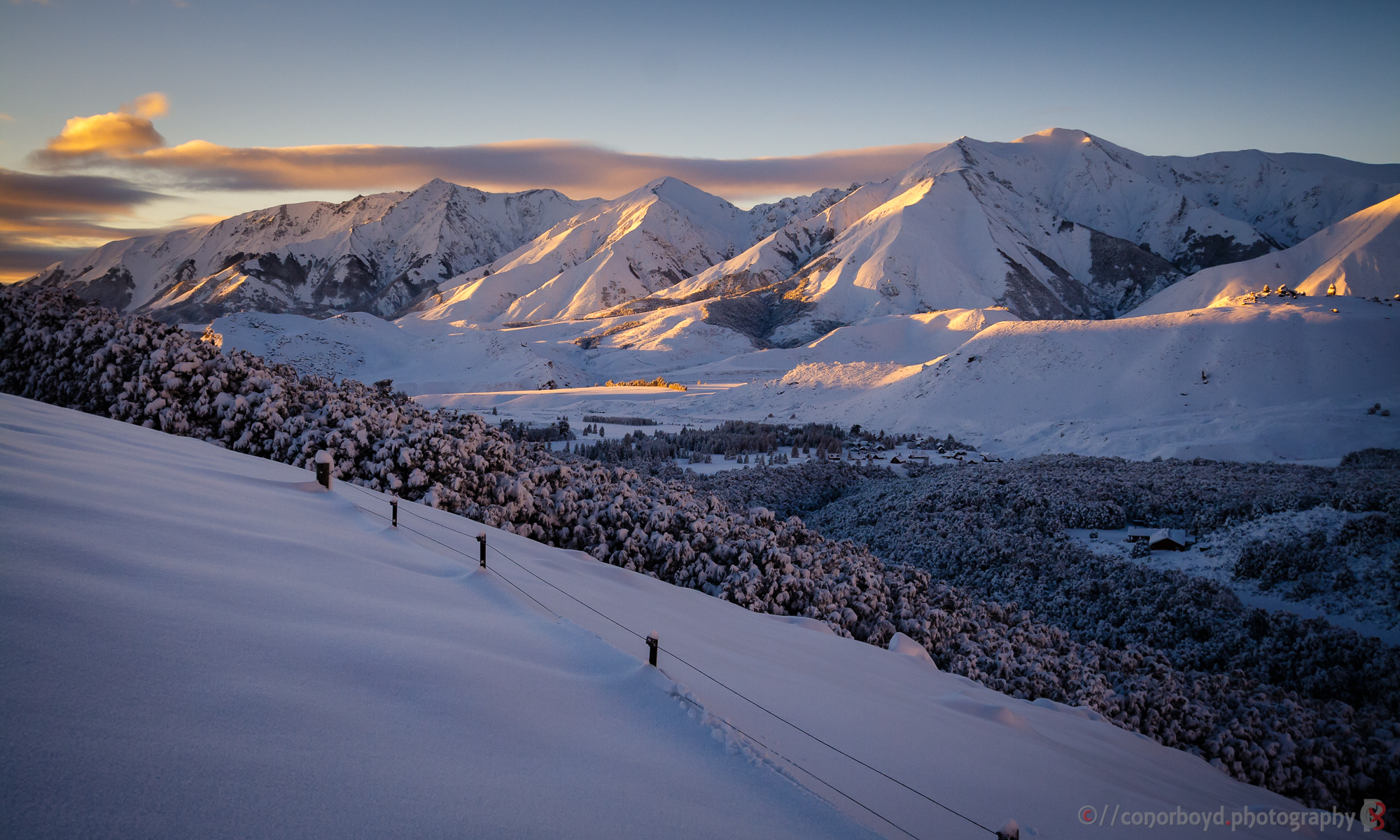General Construction
Roof Lines
When you design your house please be aware of the impact your roof line will have on neighbours views and the shading and frosting that your roof could have on their properties. On the shortest day the shadow cast is twice the height of a roof ridge; ie: an 8 metre high roof casts a 16 metre shadow. Most sections are 20 to 25 metres wide.
Snow-keepers / rails on your roof can keep the snow where it’s useful, i.e. insulating your roof and not ripping off your gutters in a big slide. Be aware that if you intend to place snow rails on your roof, snow-loading should be factored into your roof design by a qualified structural engineer.
North Aspect / Passive Solar / Thermal Mass
Given the generous number of sunny days experienced at Castle Hill, a good passive solar design coupled with decent thermal mass can have great benefit. Part of this can include analysing sun angles at various times of the year using computer software.
Feel free to contact Conor Boyd for more information on using e.g. Google Earth and other modelling/rendering software to analyse sun angles.
Or see the SmarterHomes website for more information on Passive heating, Thermal mass, and appropriate Orientation.
Wall Cladding
If wall cladding such as plywood products is used there is benefit in having more nailing than normally specified because of the intense summer and winter temperatures – a rule of thumb is to double the nailing quantity on the bottom edge of the sheets of plywood to minimize any warping or cupping of the plywood – especially if the wall surface is stained dark.
Framing / Insulation
Consider thicker wall framing (e.g. 150mm instead of 100mm) to enable higher R-value wall insulation to be installed.
Decks
The most effective fastening of planking is to skew nail the planks, or screw them. Vertical nailing tends to loosen as the timber planks move in the heat of summer. For the same reason, hardwood decking timber (e.g. Kwila and the like) may be considered as well.
Plumbing
Toby Box Freezing
In heavy frosts the water can freeze at the water valve positioned in the blue Toby box located on the boundary of your section. There appears to be benefit in insulating the Toby box cavity with something like batts or pebbles wrapped in plastic. If your water does freeze at this point blowing a hot hair dryer over the valve very quickly melts the ice.
Trace Heating
You can consider running trace heating wires alongside pipes that may be prone to be freezing – be aware though that the possibility remains that when you need this the most (i.e. coldest temps), power-cuts due to snow-downed powerlines are not unheard of at Castle Hill.
Plumbing in Exterior Walls
To minimize the possibility of pipes freezing it is prudent to not install water pipes in un-insulated roof spaces, or on outside walls.
Draining Water Pipes over Winter
If a house is to be vacated for extended periods over winter there is benefit in draining the water pipes. Pipes should be installed with a slope down to drain valves that discharge drained water outside the house.
Toilet Bowls can Freeze and Fracture
Toilet water bowls can freeze and fracture in very cold spells. Apparently this can be minimized by placing a tennis ball in the water bowl if the house is going to be unattended over winter.
Wetbacks
Consider using closed glycol loops for wet-back systems so that any related pipework is less prone to freezing and splitting.
Electrical
Generator
Wiring your house to allow a 2kva generator to be connected to the switch board provides the opportunity to function in an extended power outage.
WiFi-enabled Heatpumps
If you use heatpumps, this provides the ability to turn the heatpump on prior to your arrival, or turn it off after renters may have vacated.
Heating and Ventilation
Heat Transfer Systems
This includes both heat recovery systems (such as HRV) and internal heat-transfer systems (such as Securimax/Heat Trans).
Transferring heat generated in an un-insulated roof space from solar gain into a house has benefits of:
- minimizing home heating requirements,
- improving internal air quality, and
- pressurizing the house to minimize the impact of airborne particles such as pollen.
Both types of system also help distribute heat generated from a log burner throughout the house due to the turbulence created by the airflow.
Insect Screens
Insect screens fitted to windows allow the interior of a house to be well ventilated in late spring, summer and early autumn without the need for a heat pump. Screens may only need to be installed on one or two windows on each side of a house to provide sufficient air flow to cool the internal spaces.
Wood Storage
There is much benefit in having under cover wood storage designed into the initial house design. A log burner can burn up to 15 cubic metres per annum if a house is continuously used. Ideally store wood for 12 months to allow it to dry thoroughly.
